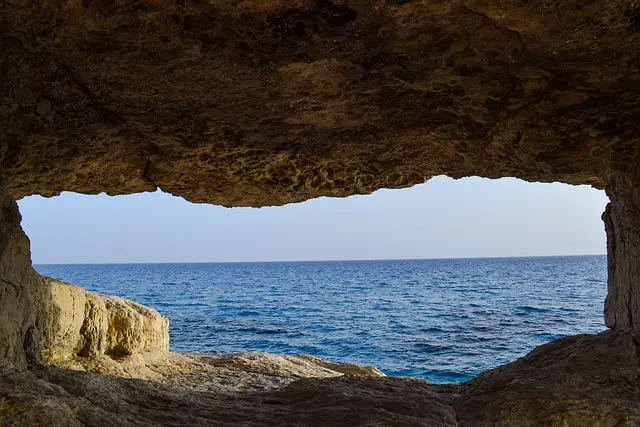Canyoning, also known as canyoneering in the United States, is an exhilarating adventure sport that combines hiking, climbing, swimming, and rappelling through stunning canyons formed over millennia by the relentless power of water. One essential piece of equipment that ensures the safety and convenience of your adventure is the canyoning bag. If you’re preparing for your next thrilling outing, understanding the vital role of a canyoning bag can make a world of difference in your experience.
What is a Canyoning Bag and Why Do You Need One?
The Definition
A canyoning bag, or canyoneering pack, is a specialized backpack designed to meet the unique demands of canyoning. This sport requires navigating through narrow gorges, rugged terrain, and flowing water. Thus, a regular hiking backpack simply won’t suffice. The canyoning bag is built to be waterproof, durable, and efficient in managing the gear you’ll need on your expedition.
Key Features of Canyoning Bags
1. **Waterproof Material**: Unlike typical backpacks, canyoning bags are constructed with waterproof materials to keep your essential gear dry. Whether you’re swimming through deep water or getting drenched by waterfalls, your canyoning bag ensures that water-sensitive items like food, clothing, or electronics stay dry.
2. **Durability**: Canyons are notorious for their jagged rocks and abrasive surfaces. Canyoning bags are made from tough materials like PVC or TPU-coated fabrics, capable of withstanding harsh environments.
3. **Drainage System**: A unique feature of canyoning bags is their efficient drainage system. These bags often come with multiple drain holes to allow water to escape quickly, preventing the bag from becoming waterlogged and heavy.
4. **Comfort and Fit**: Since canyoning involves a lot of climbing and maneuvering, these bags are designed to fit snugly to your back, often featuring adjustable straps, chest harnesses, and padded waist belts for even weight distribution and comfort.
Choosing the Right Canyoning Bag: What Should You Consider?
Size and Capacity
When selecting a canyoning bag, consider its size and capacity. Bags typically range from 20 to 50 liters. If you’re embarking on a short adventure with minimal gear, a smaller bag might suffice. For longer, more gear-intensive trips, opt for a larger capacity.
Accessibility
Easy access to your gear is crucial. Look for bags with multiple compartments or pockets, allowing you to organize and retrieve items quickly without unpacking your entire bag.
Attachment Points
Attachment points are essential for canyoning as they allow you to secure extra gear such as ropes, helmets, and carabiners to the outside of the bag. Look for bags with strong, reinforced loops and clips.
Comfort and Fit
You’ll likely be wearing your bag for extended periods. Ensure the bag has adjustable, padded shoulder straps and a supportive waist belt. Consider trying different models to see which fits your body type best.
Brand and Reviews
Research the brand and read user reviews. Brands like Petzl, Canyoneer, and AlpDesigns are well-known in the canyoning community for their reliable, high-quality products.
Must-Have Items in Your Canyoning Bag
When packing your canyoning bag, prioritize safety and functionality. Here’s a checklist of essential items:
1. **Personal Protective Equipment (PPE)**: Harness, helmet, gloves, and wetsuit.
2. **Technical Gear**: Ropes, carabiners, descenders, and ascenders.
3. **Emergency Kit**: First aid kit, whistle, and an emergency blanket.
4. **Navigation Tools**: Map, compass, and GPS device.
5. **Hydration and Nutrition**: Water bottles or hydration bladder, energy bars, and snacks.
6. **Clothing**: Dry clothes for after the adventure.
7. **Miscellaneous**: Sunscreen, headlamp, multi-tool, and waterproof camera.
Maitaining Your Canyoning Bag: Tips for Longevity
To ensure your canyoning bag lasts for many adventures, proper maintenance is essential.
Cleaning
After each trip, rinse your bag with fresh water to remove dirt, sand, and salt. Use a mild soap and soft brush to clean any stubborn spots. Allow it to air dry completely before storing.
Storage
Store your bag in a cool, dry place away from direct sunlight. Avoid leaving it in a damp area to prevent mold and mildew.
Regular Inspections
Before each trip, inspect your bag for any signs of wear and tear. Check the seams, zippers, and attachment points to ensure they are in good condition.
Conclusion: Elevate Your Canyoning Experience with the Right Bag
In the world of canyoning, your equipment can make or break your experience. A high-quality canyoning bag is not just a luxury but a necessity. It protects your gear, enhances your comfort, and ensures that you can focus on the thrill of the adventure without worrying about logistics. By choosing the right canyoning bag and maintaining it properly, you pave the way for countless unforgettable canyoning excursions, immersed in the beauty and challenge of nature’s most exhilarating landscapes. Happy adventuring!




